Blog • Understanding Publishing
Last updated on Feb 07, 2023
How to Publish a Book in 2025: 10 Steps to Success
About the author
Reedsy's editorial team is a diverse group of industry experts devoted to helping authors write and publish beautiful books.
More about the Reedsy Editorial Team →Martin Cavannagh
Head of Content at Reedsy, Martin has spent over eight years helping writers turn their ambitions into reality. As a voice in the indie publishing space, he has written for a number of outlets and spoken at conferences, including the 2024 Writers Summit at the London Book Fair.
View profile →If you’re a writer, a dreamer, or anyone with something important to say, you’ve probably thought about writing and publishing a book. But while completing a writing project is a huge achievement in and of itself, getting it in front of readers is another matter — and figuring out how to publish a book can present a real challenge for first-timers!
Indeed, with more publishing options than ever before, today's authors have a lot to take in. We're here to cut through the fog and show you exactly how to publish a book in 2025. In this comprehensive guide, you’ll find concrete tips, publishing resources, and all the professional guidance you’ll need to get your book out into the world.
Here's the simple step-by-step process to publish a book:
- 1. Choose a publishing route
- 2. Edit the draft
- 3. Get feedback from editors and critique circles
- 4. Title your manuscript
- 5. Format your book for publication
- 6. Design a book cover that converts readers
- 7. Write a "publisher-ready" book description
- 8. Create a book launch plan
- 9. Publish your book on online retailers
- 10. Market the book to increase sales
1. Choose a publishing route
Again, modern authors have many publishing routes from which to choose. There’s no one “right” way to publish a book — so the steps in this guide should be seen as best practices, rather than mandatory actions.
That said, your path to publishing a book will inevitably affect your approach here. Before you proceed, you need to decide:
- Your choice between self-publishing or traditionally publishing?
- If the latter, do you want to go through a smaller press or larger publisher?
✅
Is self-publishing or traditional publishing right for you?
Takes one minute!
This quiz should point you in the right direction, but at the end of the day, only you can determine which publishing path is right for you. If you haven’t looked into it yet, check out the posts linked above! But for those who just want quick takeaways on self-publishing vs. traditional publishing, we’ve summarized them in the table below.
Pros and cons of three different publishing routes
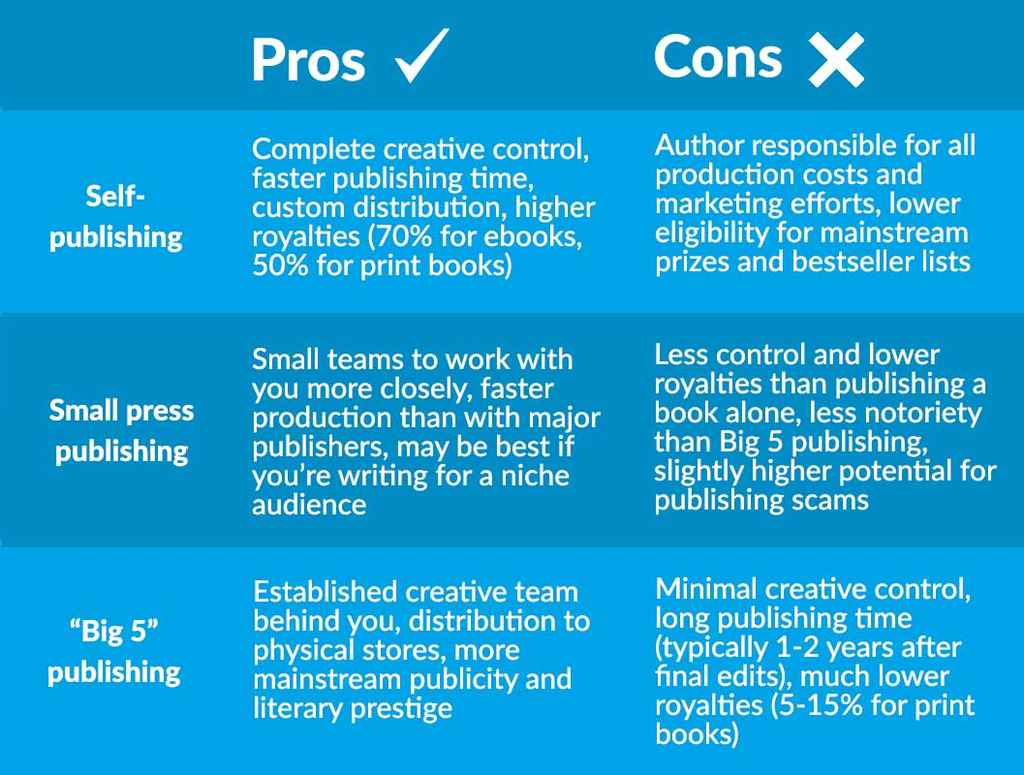
Got a solid sense of the best publishing route for your book? Great! Now we’ll cover advice that every author should take into account, regardless of how they choose to publish.
2. Edit the draft
The greatest gift any author can give their manuscript is a thorough edit. Yes, this is true whether you’re publishing your book by yourself or submitting your book to agents: either way, people will be reading it, judging it, and making decisions that impact its success.
Never edited a book before? Fear not — you can download this self-editing checklist below, and we’ve also written a step-by-step guide to how to edit a book to get you through it! That post contains detailed editing tips for every major story element like plot, characters, and conflict, as well as finer aspects like dialogue and descriptions.

FREE RESOURCE
Get our Book Editing Checklist
Resolve every error, from plot holes to misplaced punctuation.
Here are also a few pointers to get you started:
- Wait a week or more before you edit. This will give you the fresh eyes you need to consider your writing the way an editor would.
- Start with plot and characters. Read through your entire book and take notes with big-picture elements in mind. Does your plot follow a cohesive structure, have a good number of plot points, and not seem too rushed at the end? Do your characters feel well-rounded, with compelling motivations driving them and dynamic interactions with others?
- If this is too intimidating, skip to line edits. Maybe you can’t wrap your head around plot or character changes right now — but you can still work on the pacing of individual scenes. Or you can hone your voice with better word choice. Even correcting basic mechanical errors is better than nothing!
- When in doubt, read out loud. If you’re struggling to get through a chunk of editing, try reading passages out loud. This is a great way to break down your mental blocks and hear what can be improved in your writing.

Do I really need to edit my book?
In short, yes. No one wants to read a book full of typos or plot holes, and no self-respecting author would publish an unedited draft anyway. Unless you’ve already signed a book deal, you’ll need to find someone to iron out your manuscript — and short of training to become an editor yourself, that means hiring a professional editor to do the job.
Need a deep-dive developmental edit? A careful copy edit? One final eagle-eyed proofread? Professional editors take care of every detail to ensure your book is practically perfect before it goes to press.
Hire an expert
Laura K.
Available to hire
Skilled editor and typesetter with over a decade's experience in the industry. I specialise in working with self-publishing authors.
Jason L.
Available to hire
NYTimes Bestselling Editor with 15+ years experience. Worked with George R.R. Martin, Kristin Hannah, Scott Lynch, Diana Gabaldon!
Sean L.
Available to hire
Proofreader/editor for 11+ years, reader for 40+, and as a lifelong fan, horror is my go-to genre.
3. Get feedback from editors and critique circles
Whether you hire an editor or not, thoughtful third-party feedback is invaluable. So throughout the editing process (most authors go through multiple rounds of revisions), share your manuscript with trusted collaborators to see what they think.
To help your participants provide more honest feedback, ask them to submit an anonymous form with their thoughts on specific elements — namely, plot, characters, pacing, and prose. You might include a rating system to make it easier for them. Also, to make sure their feedback is constructive, ask them to propose a solution to each problem, not just point it out.
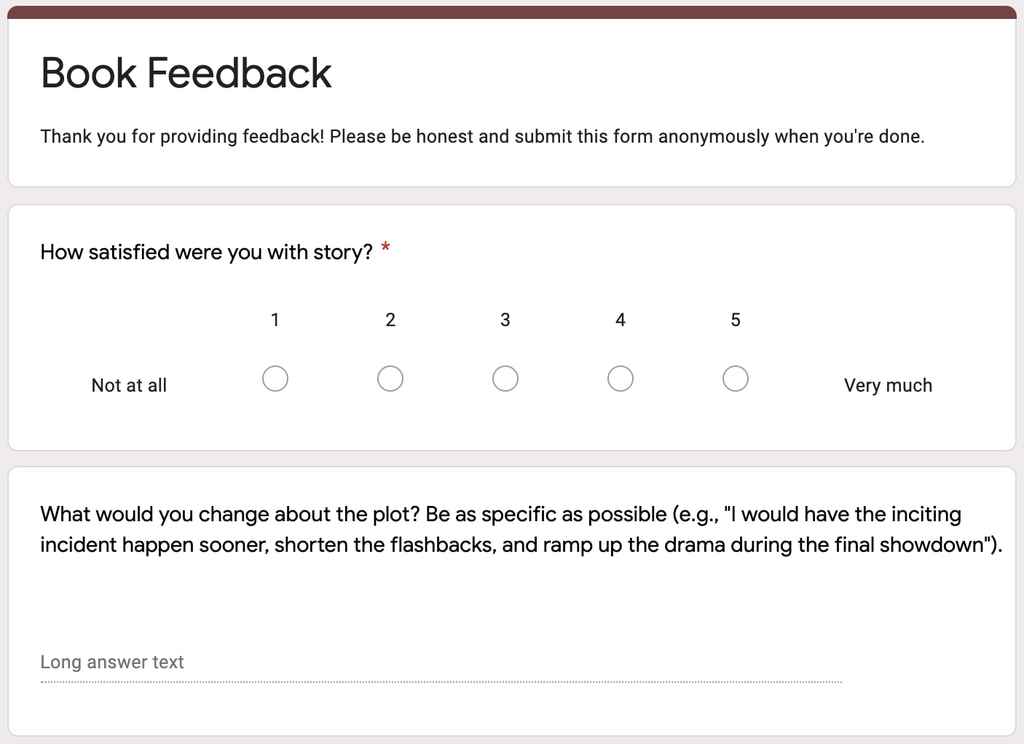
Where should I look for feedback?
If you feel comfortable asking friends and family for their notes, you should. However, this can be a delicate process, and it may be better not to involve anyone you know personally. Here are three more ways you can get reliable feedback on your book:
⭕️ Critique circles are fantastic places to get feedback. Not only do they allow you to get notes on your book, but they also help hone your own critical skills! Check out that post to learn more about critique circles.
🖊 Writing communities can also be useful. Many of these communities have built-in critique circles, but it’s worth checking their individual forums to see if anyone’s looking for a critique partner — or, if you’re lucky, offering free critiques.
🤓 Beta readers are a third way to get detailed, candid feedback from people who are invested in your book. For context, most authors use beta readers after they’ve done some self-editing, but before they pass their book off to an editor. You can read through that post to learn more.
4. Title your manuscript
Having come this far, you may have already chosen your book’s title. But if you haven’t quite settled on it — or if the editing process changed your manuscript so much, you feel like you need a new title to match — now’s the time to nail it down.
We have some amazing resources to help you out with this, including our book title generator (which offers over 10,000 possibilities!) and our post on how to choose great book titles. But whatever title you choose, you’ll be fine if you take the following to heart:
- Keep it short. Think about how many bestsellers these days have one-to-two word titles. Titling your book “The [Something]” is a timeless approach for a reason — it gets the idea across quickly and is easy for readers to remember.
- Make it intriguing. Another advantage to a short title is that it naturally creates intrigue. Still, when in doubt, layer on a little more. Brit Bennett could have just as accurately called her 2020 book The Vignes Family Saga, but The Vanishing Half is a much more intriguing, elegant title.
- Don’t copy anyone too closely. While it’s good to use tried-and-true formulas, you don’t want your title to sound so familiar that people think, “Haven’t I read that before?” Steer clear of, say, The Galileo Code or The Girl on the Bus.
Stuck in the mud with your title? Give that book title generator a whirl!
5. Format your book for publication
Now that you have your manuscript fully polished, you’re ready to format your book with chapter headings, aligned text, and page numbers. Again, this is crucial whether you’re self-publishing or sending your work to agents: either way, you want to make a good impression with a professionally formatted book.
For those sending their book to agents, all you need is to format your manuscript in a standardized, readable way. We actually have a manuscript formatting template just for the occasion! Simply plug in your text and send the file on its way.
If you’re publishing solo, this step gets a little trickier — you have to format your book so it’s 100% ready to upload to your chosen self-publishing platform. And many authors are understandably apprehensive about formatting; after all, design is a very different skill set from writing.
That’s why we created the Reedsy Studio — a simple, intuitive, and best of all FREE tool to format your book for publication. Try Reedsy Studio for free today.
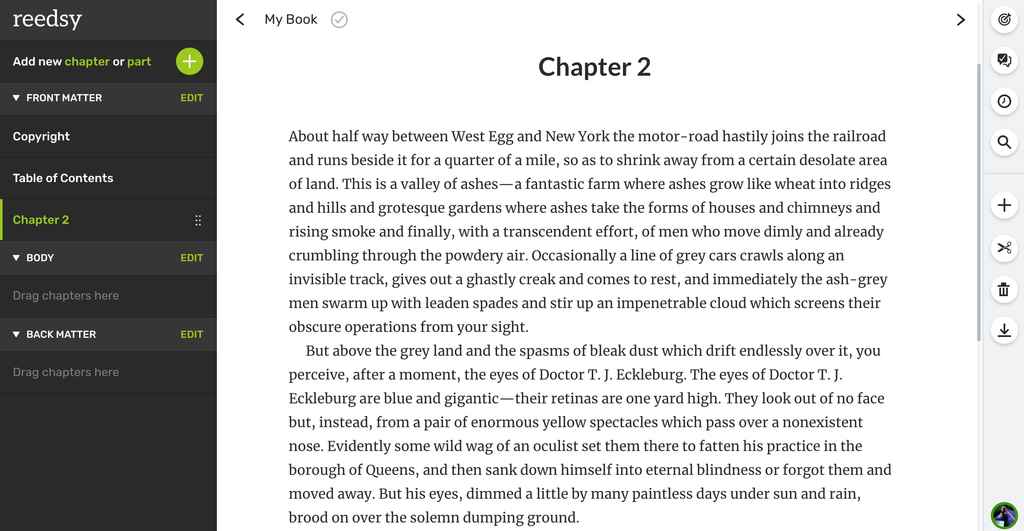
More book formatting options
🙌 Free formatting software. Other than Reedsy Studio, you can try Kindle Create and Apple Pages, both of which provide formatting templates for free. However, each software caters to its own store, so converting your files for other retailers may get messy.
💸 Paid formatting software. You can also spring for more elaborate formatting software like Vellum ($200), or Scrivener ($45) for a cheaper alternative. The nice thing about these programs is that you can try them for free and, if you like what you see, pay the license fee to format as many books as you want.
👩💻 Hire a professional typesetter. Another good option, especially for those planning to print on demand, is to hire a professional typesetter. This is the most expensive route, but it ensures immaculate interior design — which, if you're printing your book, matters a great deal since you don’t want the text to be unevenly spaced or sucked into the binding.
Now take a moment to stop and think!
So far, this guide has applied to all methods of how to publish a book, but this is where things diverge. From here, the steps to publishing a book will depend on your preferred path:
- If you plan to self-publish, follow the rest of this guide in its entirety.
- If you plan to publish traditionally, now is the time to start querying literary agents! Steps 6-10 will be handled by your eventual publisher. However, if you want to publish through a small press (which means more hands-on involvement) or you simply want a better grasp of the full publishing process, feel free to keep reading.
6. Design a book cover that converts readers
The next thing you’ll need to successfully publish your book is a strong cover. Your book cover provides readers with a vital first impression of your work, which means it must not only to attract your target audience’s attention, but also let them know that this book is for them.
To do this, your cover design should be:
- Eye-catching yet tasteful. Whether you choose a photo-based, illustration-based, or typography-based cover, it must be interesting enough to catch the reader’s eye, yet not so busy that it looks overwhelming or unprofessional. Here are three covers in each of those categories that achieve just the right balance:
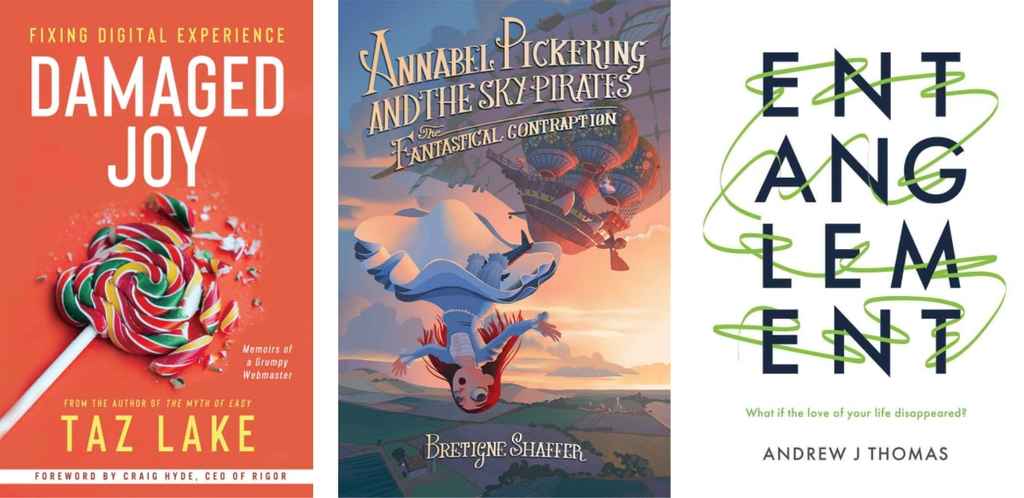
- Genre-indicative. Consciously or not, readers look for certain cover design elements in their favorite genres, and yours must match (at least some of) these conventions too. Romance novels, for instance, tend toward illustrated covers and shades of red, pink, and purple. Thrillers, meanwhile, often employ dark colors and unsettling photos to signal their content. A few more examples to demonstrate:

- Tailored to your publishing medium. If you’re self-publishing an ebook, your cover should be just that — a cover — since that’s all readers will see. However, if you’re planning to print your book, you’ll need a spine and design for your back cover as well.
As with formatting, all this might sound pretty intimidating to non-design-savvy authors. But unlike interior layout, which most authors can DIY with the right tools, your cover should really be designed by a professional. You shouldn’t take any risks with your number-one marketing tool, and a professional cover designer has the talent, experience, and industry knowledge to help your book succeed!
💸
What will it cost you to get a professional book cover?
Find out here! Takes 30 seconds.
With your unique vision and their design skills, the two of you can work together to create a cover that not only converts readers, but also makes a lasting impression on them.
7. Write a "publisher-ready" book description
Your book description is another major factor in getting people to buy your book. Luckily, it’s easy to optimize your description for better sales. Our post on how to write a book description that sells is the most helpful resource for this, but the basics of writing a strong description are:
- Hook readers with a headline. Whether it’s a dramatic statement, a pull quote from a rave review, or the actual first line of your book, your headline should get readers invested right away.
- Introduce the plot or main idea. But don’t summarize the whole thing — you don’t have space for that! Give a brief description of the central conflict(s), or if you’ve written a nonfiction book, note the core concepts you’ll be covering.
- Leave them wanting more. End on a question, a hint at a twist, or even an outright cliffhanger. Make it impossible for readers not to preview your book (if only because they’re skeptical that you can pull it off).
When in doubt, look at the descriptions of bestsellers in your genre and try to emulate them. Read five-to-ten of these descriptions and you’ll likely see a pattern start to emerge — from there, your description will practically write itself. Like this:

What about keywords and categories?
While not contained in your book description, keywords and categories are two more important parts of your online book listing. For those who don’t know:
- Keywords are related phrases that people might search to find a book like yours. For example, if you’ve written a self-help book about eating better, some of your keywords might be “how to eat healthy,” “best diet plan,” and “change your life.” You can check out our post on Amazon keywords for more info.
- Categories are the genres and subgenres to which your book belongs. These can be as general (“Nonfiction”) or as specific as you want (“Nonfiction > Biography & Autobiography > Personal Memoirs”). More can be found in our essential guide to Amazon categories!
The best way to choose keywords and categories is to put yourself in your target reader’s shoes. What would they search in order to find your book? What similar books might they be reading, and into which categories do those books fit?
A nice thing to remember about your book description, keywords, and categories is that you can always tweak them later. That said, you should still try to optimize these elements before your book launch and hit the ground running. Speaking of which, the next step is...
8. Create a book launch plan
Your book isn’t going to sell itself, and the first few days are make-or-break. So one thing you need before you publish (and which you should start working on as early as possible!) is a killer plan for launch.
This plan should raise awareness, tap into your existing audience, and kick up a fuss about your book. The book launch guide linked above explains everything in detail. At this point, we also recommend downloading our book launch checklist to make sure that you've ticked off every box so far.
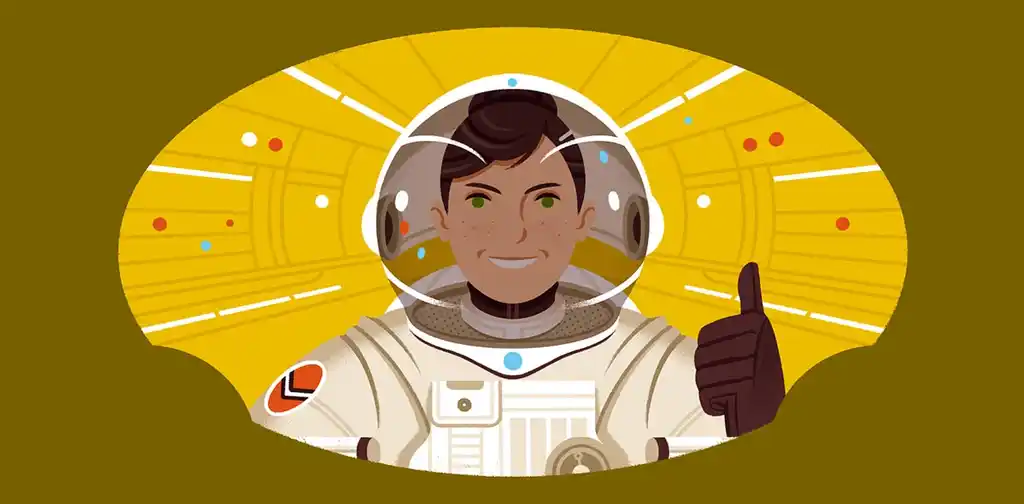
FREE RESOURCE
Reedsy’s Book Launch Checklist
Launch your book successfully with our tried-and-true strategies.
And now, let’s quickly cover four actions you should definitely include in your launch plan:
👯 Form a street team. This will consist of friends and collaborators who promote your book on their own platforms. Remember, joined forces and social proof are much more powerful than a single, self-serving effort!
👩🏽💻 Build a website and mailing list. You’ll need an author website with a clear signup area for your mailing list to acquire readers. Get on WordPress or hire a web designer, and start learning all you can about mailing lists.
📖 Get book reviews. If your title has zero reviews when it launches, people will assume it’s not worth reading. Avoid this ill fate by reaching out to reviewers early and often — make sure you’re targeting reviewers and bloggers in your niche.
🎉 Throw a virtual launch party. Not just on social media, but on your author website (if you have one), and by guest-posting on other people’s blogs. Make it a big event; shout about your book from the rooftops, so as many people as possible will hear about it!
9. Publish your book on online retailers
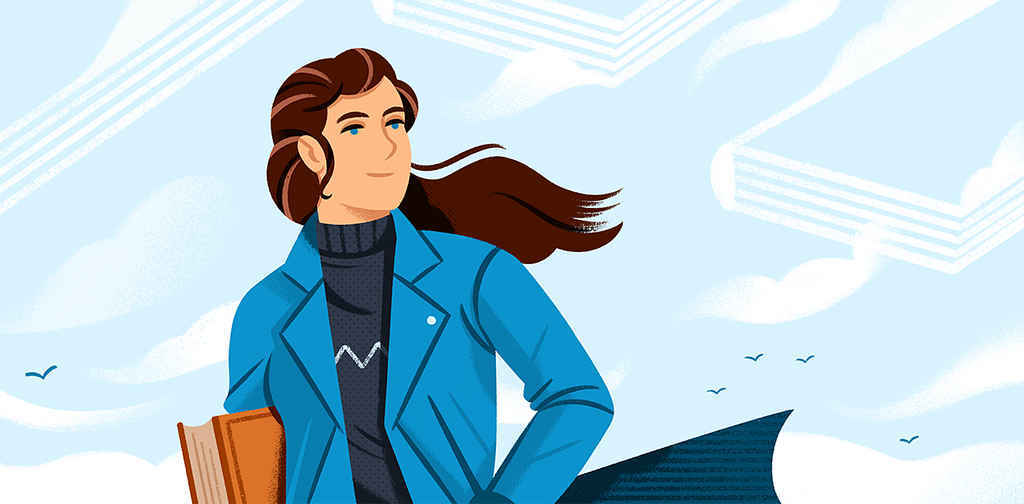
Congrats! You’re finally ready to publish your own book.
You’ll be glad to know that the act of self-publishing a book is actually pretty easy. Amazon and other retailers take you through the upload process step-by-step, and as long as you have your materials prepared, you should have no trouble. Additionally, many of them offer their services for free!
Here’s what you can expect to do, in order:
- Enter your title, book description, and keywords/categories
- Upload your manuscript as an EPUB file
- Add your book cover (JPG, TIFF, or PDF)
- Price your book and hit “publish”!
Should I publish outside Amazon?
Perhaps the biggest question when it comes to self-publishing is: should you only self-publish through Amazon, or “go wide” with other stores like Apple Books, Barnes & Noble, and Kobo?
For first-timers, going Amazon-exclusive is often the best option, simply because it offers so much in return. KDP Select (a program that requires Amazon exclusivity) allows you to run those price promotions we mentioned, plus add your book to the Kindle Unlimited library, where even more readers can find it.
However, disregarding other platforms may not be a good idea if your target readers live in an area where Amazon has less sway over the online book market (like Germany or Canada).
It’s also not ideal if you want to make your book “permafree”, since Amazon only allows limited-time free promos, or if you don’t think your book will get many readers through Kindle Unlimited. (Some genres do better than others on KU — find out more in this blog post.)
The bottom line: Do your research to figure out what’s right for you. We’ve written another post on ebook distribution and the fine print of Amazon exclusivity, so if you’re weighing your options, that’s a great place to start.
10. Market the book to increase sales
Your book is polished, published, and hopefully pulling in readers already! But that doesn’t mean your work is done — far from it.
The final step of how to publish a book is marketing it to the fullest. You’ve already gotten the ball rolling with your launch plan, but here are a few more essentials to take into account:
🤝 Do more blog tours and connect with authors. Guest-posting to promote your book isn’t just for your launch plan! Even after you’ve launched, continue reaching out to relevant blogs, especially those written by other authors who might want to cross-promote.
🤑 Make the most of price promotions. Unless your book is permafree, the price can always be better for customers. If your downloads are dipping and you haven’t run a price promotion in awhile, try that next.
💁🏻 Employ third-party promotional services. Burnt out on self-marketing, or simply don’t have the mass influence you’d like? Book promotion services can help you out. Look for services that cater specifically to your book’s target audience.
💪 Always be prepared for opportunities. You never know when you’ll have the chance to promote your book in a life-changing way! If you were to run into Reese Witherspoon tomorrow, you should have a preview of your book ready to AirDrop onto her phone.
Final thoughts
Publishing a book is always an enormous undertaking, whether you choose self-publishing or not. The good news is that if you’ve read this far, you now know exactly what your options are, plus the pros and cons of each.
We can’t publish your book for you — however, we’re confident that you have everything you need in order to achieve this lifelong goal! Keep your eyes on the prize, enjoy the journey, and send us a postcard when you get there. We're so excited to see where you end up.
Still craving more info on how to publish a book? Check out the following resources:
- How to Self-Publish a Book: 7 Steps to Success avaliable here
- How Much Does It Cost to Self-Publish a Book? avaliable here
- How to Publish a Book Traditionally avaliable here
- How to Get a Book Deal avaliable here






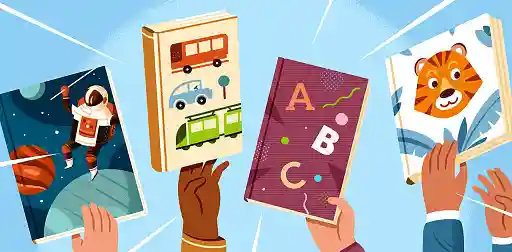




1 response
Rick Pacal says:
19/02/2020 – 19:08
Great information here. I really appreciate these tips on self-publishing. I have completed 13 short stories and am currently writing my 14th, with a 15th on the horizon with an idea. When they're all finished I hope to self publish. Thanks to your suggestions, I will go back to my first story and begin editing once again. Since my book will be a compilation of 15 short stories, I don't have a title for the book as yet. Perhaps it will be the title of one of the stories...or something else. My grandson is a pretty good artist/cartoonist and I might call upon him to design the jacket cover. Once again, thanks for all your help, advice and suggestions.